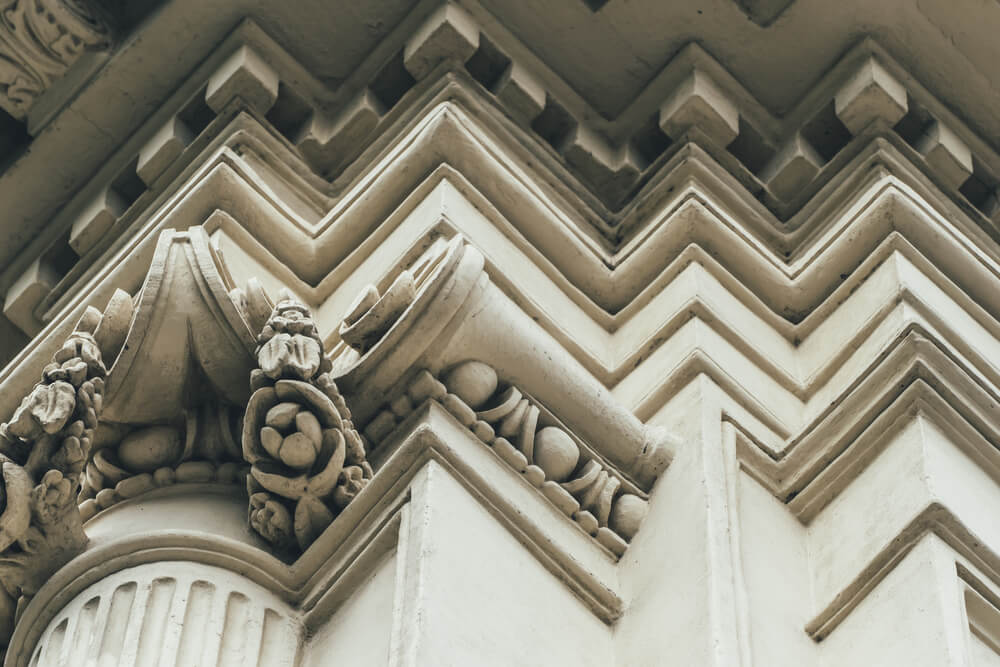Instilling a sense of boldness, as well as humility, contemplation and intellect, classical architecture brings a unique aesthetic inspired by ancient European civilisations. With distinct and striking elements setting this style apart from others and making it instantly recognisable, it provides the perfect inspiration for those looking for a more traditional look and feel for their new home.
History of classical
The classical architecture style that originated in Ancient Greece and Rome between the fifth and third centuries was most widely used in the design of public buildings such as religious temples using the principles of order, symmetry, geometry and perspective.
One of the most notable characteristics of this style is that it follows the rules of the Vitruvian Triad – as defined by the Roman architect Marcus Vitruvius – for a great structure: solidness, usefulness and beauty. These rules created the basis for the unique aesthetic which defines classical architecture.
Classical architecture has since been widely used and reproduced throughout history, finding its way into the inspiration for the design of banks, schools, courthouses, churches and homes.
Characteristics of classical
Buildings constructed in this style were typically built from marble or other durable and attractive stone, but this has since widened to other materials including brick, concrete and stone. They follow a highly-structured system of proportions that relate the individual components to the whole structure.
Typically buildings in this style are designed using one or more of the classical orders – doric, ionic and corinthian being the most widely used – which follow recognised forms and proportions for the columns and entablature. It is these columns that form one of the most distinct elements of buildings of this style. They may also include other common features such as pediments and balustrades.
Classical style homes also tend to have symmetrical plans and facades over irregular ones.
From classical to neoclassical: making traditional modern
Neoclassical architecture originally emerged in the 1700s before losing popularity and making a comeback in the early 1900s, primarily in residential buildings.
This style takes inspiration from classical architecture, scaling it down and making it more flexible. Therefore, rather than strictly following the traditional style, it utilises only some of the prominent features such as symmetry, full-height porches with columns, and ornament decorations like dentil cornices.
Due to their simplicity of shape and construction, these homes are solid, making them popular.
Making classical your own
Due to the flexibility of the more modern neoclassical style, home builders who prefer a more traditional look are able to incorporate their preferred elements in the design to make it their own.
This means it is important to select an architect who has experience in bringing together different styles and elements to create a design that comes together seamlessly, looks and feels complete, and is uniquely you.
Grollo Homes has over 50 years’ experience in the construction industry, designing and building custom homes to meet the needs and desires of the client. Working together with clients, the team at Grollo has brought to life clients’ dream classical style home, whether that be a more traditional look, incorporating a couple of elements such as columns, or the look of the interior.
Working with both an experienced architect and a builder on the Grollo Homes team from start to finish, you will be able to realise your dream home, in your budget, without compromising on quality or craftsmanship.


